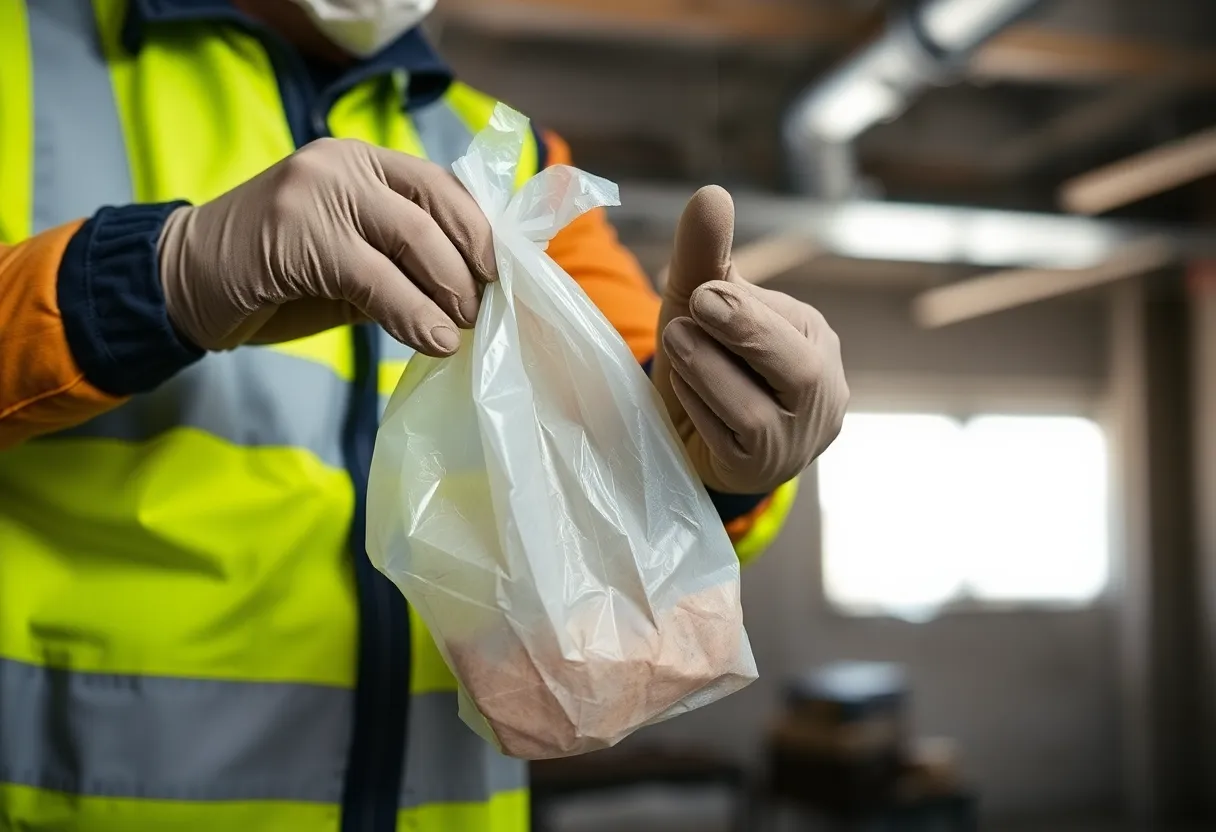News Summary
A recent study from South Korea highlights the safety risks associated with glove bags, used in asbestos removal. While they aim to contain airborne particles, improper use can expose workers to hazardous levels of asbestos. The researchers urge for improved safety measures and better training to prevent serious health issues like mesothelioma.
New Study Reveals Hidden Dangers of Asbestos Removal Techniques
As awareness of asbestos dangers spreads, a recent South Korean study sheds light on a crucial aspect of construction safety. Asbestos, a notorious mineral linked to the insidious disease mesothelioma, was a common component in building materials until the mid-1970s. Despite its ban, legacy asbestos remains embedded in countless structures, posing ongoing health risks. With the goal of ensuring worker safety during asbestos removal, glove bags—flexible plastic enclosures designed for small-scale abatement tasks—are increasingly used. However, the study raises questions about their effectiveness in real-world applications.
Glove Bags: A Double-Edged Sword
Glove bags are intended to create a contained environment around the area of asbestos removal, thus minimizing the risk of exposure to the airborne particles that lead to serious health issues like mesothelioma. Typically, these bags are employed for the removal of pipe insulation, but their use has expanded to include ceiling tiles and other materials.
The report published in the journal Scientific Reports indicates that while glove bags provide some containment benefits, improper application can result in hazardous situations for workers and those nearby. During the study, scientists measured airborne asbestos concentrations at various sites and discovered that in some cases, the levels surpassed OSHA’s permissible exposure limit— alarming news indeed for the safety of laborers.
The Fallout From Inadequate Techniques
The prospect of inhaling asbestos fibers evokes legitimate concern, as the consequences can be dire. The researchers pinpointed specific shortcomings in the application of glove bags, particularly around airflow and sealing. It was determined that insufficient ventilation led to elevated airborne asbestos levels, emphasizing the crucial need for improved safety measures.
Moreover, the study revealed that gaps between the glove bags and ceiling materials often allowed harmful dust to escape during operations. Such inadequacies highlight the importance of maintaining an effective seal while conducting asbestos removal to avoid exposing workers to hazardous particles.
Enhanced Safety Recommendations
The researchers provided a list of essential recommendations for ensuring better containment during asbestos removal tasks. These precautions include:
- Securing all tools and equipment to prevent accidental drops that could jeopardize glove bag integrity.
- Utilizing impermeable vinyl bags that are at least 0.15mm thick for more effective containment.
- Employing strong adhesive tape to fortify seals around the work area.
- Incorporating HEPA-filtered vacuum systems to capture stray asbestos fibers during removal operations.
Additionally, they stressed the importance of ensuring a robust adhesion between the glove bag and the ceiling materials to prevent leaks. Filters should be replaced immediately after use to avert cross-contamination that could further compromise safety.
The Ongoing Risk of Mesothelioma
For those who have worked with asbestos in the past, the reality of developing mesothelioma is all too real. This aggressive cancer, often only diagnosed after symptoms present in advanced stages, creates a need for ongoing education and support in the realm of workplace safety. Individuals can reach out for assistance after a diagnosis if needed, as resources exist to navigate the complexities posed by asbestos exposure.
As the legacy of asbestos lingers, the implications of this study highlight the pressing need for proper training and monitoring during removal operations. Workers and employers alike must adhere to established safety protocols to mitigate the numerous health risks associated with this hazardous material. Vigilance is key in avoiding the long-term effects of exposure to asbestos when engaging in construction and remodeling tasks in older buildings.
If you or someone close to you is facing potential asbestos exposure, understanding the risks associated with incomplete removals and the necessary safeguards can make all the difference. Always ensure that any work involving asbestos is done by trained professionals equipped with safe and effective practices.
Deeper Dive: News & Info About This Topic
HERE Resources
Asbestos Continues to Be a Significant Public Health Risk in Britain
Mesothelioma Crisis in Philadelphia Schools
Parents Protest Asbestos Exposure at P.S. 176 The Ovington School
Controversial Loyalist Bonfire Sparks Safety Concerns in Belfast
Graham County Jail Faces Scrutiny Over Hazardous Conditions
EPA’s Shift on Asbestos Regulation: A Dangerous Gamble?
Keltbray Transforms into Asbestos Removal Specialist
Asbestos Concerns Rise in Schools Across Wigan
The Innovative Cryoablation Therapy Revolutionizing Mesothelioma Treatment
Asbestos Discovery Sparks Major Renovation at 1901-Laughlin Hall



















